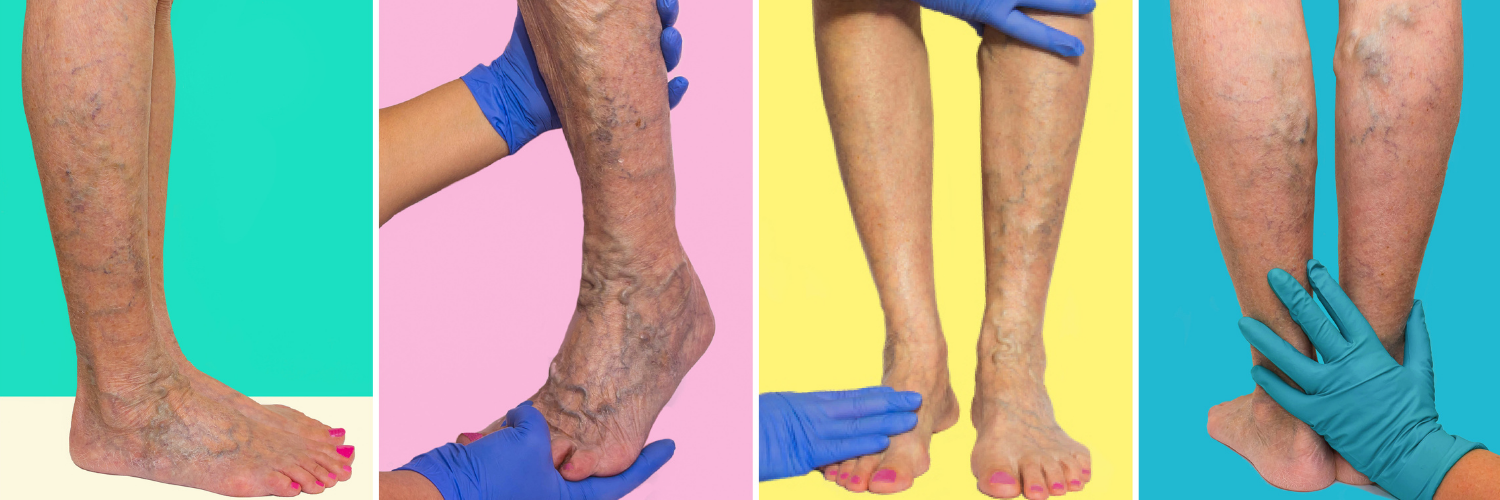How to Treat Varicose Veins

Varicose veins are visible and sometimes raised veins that tend to appear on the leg. They are generally not malignant unless they cause extreme discomfort. In most cases, though, varicose veins and their smaller cousins spider veins (miniature varicose veins that appear closer to the surface of the skin) are purely a cosmetic issue. Bluish or black in appearance, they look like a sketch of a tree erupting on the thigh.
What causes varicose veins?
Varicose veins are damaged veins. They are not damaged in a harmful way; rather, the valve that controls blood flow through this particular vein stops operating at full capacity. Think of this valve as a broken traffic light. Without direction, the blood stops, starts, and gets clogged (traffic!) right around the scene of the crime. As a result, the shape of the vein itself warps, twisting, and sometimes swelling. Blood gathers, and the vein begins to protrude from the leg.
While varicose veins themselves are not problematic, they are an indication of poor circulation. The valves in these veins suffer when blood does not move through efficiently, leading to damaged valves and varicose veins. They can be a harbinger of more drastic circulation issues — like deep vein thrombosis (leading to hospitalization) — to come.
How common are varicose veins?
Very common! Though exact numbers vary, approximately one-fourth of U.S. adults have varicose veins (23% according to one source, 24% according to another). A smaller portion of the U.S. — 6%, according to a 2016 report published in the American Health & Drug Benefits — have advanced chronic venous disease, a disease characterized by extremely poor circulation in the lower limbs. So, varicose veins themselves are fairly common; having associated health risks is less so. If you are concerned about an uptick in varicose veins, talk to your health care provider.
Varicose Vein Treatments
Circulation Treatment for Varicose Veins
First-line therapy for varicose veins is usually circulation treatment. If poor circulation caused the varicose veins, logic says that you should encourage good circulation to treat them. Circulation treatment can include the use of compression socks, exercise therapy, and elevation.
-
Compression socks
Compression socks, which you can find at any drug store, put some pressure on the lower part of the leg. The pressure encourages blood in the leg to continue circulating instead of pooling in the foot. Compression socks are popular in professions that leave people standing all day, like nursing, working at a cash register (which, in the U.S., requires standing all day), or waiting tables. -
Exercise therapy
Moving around is good for the body. This we know. But it is also good for the blood. This is why deep vein thrombosis, a blood clot in the leg, is associated with extended plane travel. Sitting too long in one place can cause the blood to pool in uncomfortable ways. Exercise therapy — just walking once per hour — works best alongside compression therapy to alleviate circulation issues. -
Elevation
You may have heard the acronym RICE: Rest, Ice, Compression, Elevation. RICE applies to acute injuries, but it has some use for circulation, too. We compress and elevate our injuries because we want good circulation in them to heal properly. In the case of varicose veins, we use compression and elevation to encourage proper circulation. Try propping your leg on a table — above the hips! — when you sit for extended periods of time.
Sclerotherapy Treatment for Varicose Veins
The most common inpatient treatment for varicose veins is sclerotherapy, in which a doctor injects medication into the veins to force them apart. This usually takes several visits to the doctor, but it is effective. Research has indicated that it is the most effective form of treatment for varicose veins in a period of two years.
Can I use medication to treat varicose veins?
The FDA has not approved any prescription medications for varicose veins. In 2015, the agency did approve a device called VenaSeal for them, though. Naturally, this is not a medication you can use at home! Read more about VenaSeal here.




